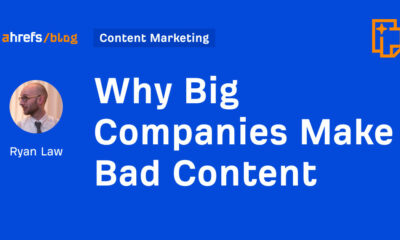With paid verification on the rise at social platforms, content creators and marketers feel mixed on its use

Hannah Kling creates healthy recipe content for her roughly 211,000 followers on Instagram. While Kling is not a fan of the new verification subscription model that Instagram recently rolled out, she subscribed to the verification anyway.
Kling was won over by promises from Meta (the owner of Instagram and Facebook) to protect users under the verification system from potential impersonators and the ability to contact a real, live person at Meta should a problem arise with her account. Kling’s previous account was hacked.
“That’s the only reason why I’m doing this, to protect my account because it is my business,” said Kling, adding that it took up to two hours for her verification check to appear on her Instagram page. “So that’s truly the only positive that I see. Aside from that, I’m feeling indifferent about it.”
In recent weeks, not only Meta platforms, but Snapchat and Twitter also increased their paid subscription services, the latter two offering users exclusive customization and verification capabilities.
With this trend on the rise, many marketers and content creators see it as a way for the platforms to diversify monetization offerings beyond advertising, though many wonder whether social media platforms will remain free to users.
“It will depend on the uptake from consumers to determine how viable this feature is and [users may] feel there will always be something else waiting in the wings if there are new features that consumers don’t love,” said Erica Patrick, svp and head of paid social at Mediahub, adding that all of the social media platforms are trying to find incremental revenue wherever possible and continue to copy one another.
How it works
Meta’s recently announced the launch of Meta Verified, a $15 per month subscription that allows Instagram and Facebook users to get a blue verification badge on their accounts. Buying the service on the web will cost you $11.99 per month and $14.99 per month if purchased on an iOS or Android device. The cost for premium features varies by platform. In contrast to Twitter Blue, which is $8 per month, Instagram and Facebook users who are already verified will not have to pay to maintain their checkmark status with Meta Verified.
In addition, Twitter is now charging businesses $1,000 a month to maintain their gold checkmark verification badges, which it introduced in December and replaced the blue checkmarks used by businesses in the past, as well as an additional $50 monthly for each affiliated sub-account.
Before being approved for a Meta Verified subscription, users will need to complete the verification process and present a government-issued photo ID which will confirm your identity before getting started. It is also mandatory to use two-factor authentication since Meta Verified subscribers will not be able to change their profile name, photo, username or date of birth without re-verifying themselves. Meta, Instagram, and Facebook did not respond to Digiday’s request for comment.
Influencer impact
Some see the paid verification system as a potential boon to influencers who consider it a way to access features previously reserved for those who had been verified — which could help them to be taken more seriously. No longer will creators need a large audience to get that blue check validation, noted Ali Fazal, vice president at the creator management platform Grin.
“Often smaller or niche influencers have more authentic relationships with their followers yet have not been awarded the same recognition or credibility as someone bigger,” said Fazal. “This new verification process is also a great way to help level-up brand and influencer partnerships across the board and instill even more trust.”
Creators are no longer defined by the same principles as they used to be, marketers said. Consumers are looking for more trust in the people they follow on social media, which makes micro and nano influencers, over major influencers, some of the most influential creators on social media.
“As the social networks are looking to do what they can to make money outside of what advertisers are paying them, it’s a good opportunity for the creators to to be treated a little bit more equal and really have experiences catered to them so that they are loyal to those platforms and they don’t move elsewhere,” said Johnny Vance, vp of partnerships and business development at Meltwater.
That said, verification hasn’t been make or break for influencer deals, said Davitha Tiller, executive vice president of social and integration of Red Havas who said the verification accessibility might me it less desirable.
Instead, Tiller said she remains focused on other variables when selecting creators to work with: content quality; authenticity and ethical alignment; their social footprint, both in terms of size and who makes up it, and whether they generate the desired reach, impressions, engagement, view rates or even conversion rates.
Fazal also highlighted creators have become the lifeblood of social media as they produce most of the engaging content on these platforms. “Finding new ways to monetize off creator marketing is smart, if these social media platforms don’t go overboard and turn creators off from wanting to produce content, or consumers to feel like they don’t have the means to access their favorite influencers anymore,” said Fazal.
As a Meta Verified subscriber, content creators gain access to stickers that are unavailable to non-subscribers on Facebook and Instagram Stories. Furthermore, creators who sign up to be Meta Verified will also receive 100 Facebook Stars per month. Facebook Stars are a digital currency that creators can use to monetize their live streams on Facebook.
Lost in the shuffle
This subscription model that may become standard could result in an over-saturation of paid social media platforms as content creators will have to decide which social media platforms they wish to pay for verification. This comes at the same time as streaming TV subscriptions are already competing for dollars.
“I’m worried about the fact that more people can be influencers and everybody can be an influencer and it just dilutes the pool and it makes it harder for content creators to kind of stand out,” said Courtney Bagby, CEO and founder of Little Red Management, a branding and social media partnership agency. Bagby pointed out that due to the constant Instagram algorithm changes, posts from content creators who are not verified could get lost in the shuffle as opposed to influencers and brands who has the verification subscription. Bagby also publishes her content on her Instagram page.
According to marketing experts, platforms test all new features and business models, including paid features and subscriptions. Considering these subscription models, it may have the effect of democratizing offerings and tools, so that anyone can virtually access tools that were once only available to traditional creators.
“It’s far too early to tell,” said Krishna Subramanian, CEO of the influencer marketing platform, Captiv8. “It will be interesting to see how the general public adapts to tools that were previously only available to creators and public figures.”
https://digiday.com/?p=497685
Facebook Faces Yet Another Outage: Platform Encounters Technical Issues Again

Uppdated: It seems that today’s issues with Facebook haven’t affected as many users as the last time. A smaller group of people appears to be impacted this time around, which is a relief compared to the larger incident before. Nevertheless, it’s still frustrating for those affected, and hopefully, the issues will be resolved soon by the Facebook team.
Facebook had another problem today (March 20, 2024). According to Downdetector, a website that shows when other websites are not working, many people had trouble using Facebook.
This isn’t the first time Facebook has had issues. Just a little while ago, there was another problem that stopped people from using the site. Today, when people tried to use Facebook, it didn’t work like it should. People couldn’t see their friends’ posts, and sometimes the website wouldn’t even load.
Downdetector, which watches out for problems on websites, showed that lots of people were having trouble with Facebook. People from all over the world said they couldn’t use the site, and they were not happy about it.
When websites like Facebook have problems, it affects a lot of people. It’s not just about not being able to see posts or chat with friends. It can also impact businesses that use Facebook to reach customers.
Since Facebook owns Messenger and Instagram, the problems with Facebook also meant that people had trouble using these apps. It made the situation even more frustrating for many users, who rely on these apps to stay connected with others.
During this recent problem, one thing is obvious: the internet is always changing, and even big websites like Facebook can have problems. While people wait for Facebook to fix the issue, it shows us how easily things online can go wrong. It’s a good reminder that we should have backup plans for staying connected online, just in case something like this happens again.
Christian family goes in hiding after being cleared of blasphemy

LAHORE, Pakistan — A court in Pakistan granted bail to a Christian falsely charged with blasphemy, but he and his family have separated and gone into hiding amid threats to their lives, sources said.
Haroon Shahzad, 45, was released from Sargodha District Jail on Nov. 15, said his attorney, Aneeqa Maria. Shahzad was charged with blasphemy on June 30 after posting Bible verses on Facebook that infuriated Muslims, causing dozens of Christian families in Chak 49 Shumaali, near Sargodha in Punjab Province, to flee their homes.
Lahore High Court Judge Ali Baqir Najfi granted bail on Nov. 6, but the decision and his release on Nov. 15 were not made public until now due to security fears for his life, Maria said.
Shahzad told Morning Star News by telephone from an undisclosed location that the false accusation has changed his family’s lives forever.
“My family has been on the run from the time I was implicated in this false charge and arrested by the police under mob pressure,” Shahzad told Morning Star News. “My eldest daughter had just started her second year in college, but it’s been more than four months now that she hasn’t been able to return to her institution. My other children are also unable to resume their education as my family is compelled to change their location after 15-20 days as a security precaution.”
Though he was not tortured during incarceration, he said, the pain of being away from his family and thinking about their well-being and safety gave him countless sleepless nights.
“All of this is due to the fact that the complainant, Imran Ladhar, has widely shared my photo on social media and declared me liable for death for alleged blasphemy,” he said in a choked voice. “As soon as Ladhar heard about my bail, he and his accomplices started gathering people in the village and incited them against me and my family. He’s trying his best to ensure that we are never able to go back to the village.”
Shahzad has met with his family only once since his release on bail, and they are unable to return to their village in the foreseeable future, he said.
“We are not together,” he told Morning Star News. “They are living at a relative’s house while I’m taking refuge elsewhere. I don’t know when this agonizing situation will come to an end.”
The Christian said the complainant, said to be a member of Islamist extremist party Tehreek-e-Labbaik Pakistan and also allegedly connected with banned terrorist group Lashkar-e-Jhangvi, filed the charge because of a grudge. Shahzad said he and his family had obtained valuable government land and allotted it for construction of a church building, and Ladhar and others had filed multiple cases against the allotment and lost all of them after a four-year legal battle.
“Another probable reason for Ladhar’s jealousy could be that we were financially better off than most Christian families of the village,” he said. “I was running a successful paint business in Sargodha city, but that too has shut down due to this case.”
Regarding the social media post, Shahzad said he had no intention of hurting Muslim sentiments by sharing the biblical verse on his Facebook page.
“I posted the verse a week before Eid Al Adha [Feast of the Sacrifice] but I had no idea that it would be used to target me and my family,” he said. “In fact, when I came to know that Ladhar was provoking the villagers against me, I deleted the post and decided to meet the village elders to explain my position.”
The village elders were already influenced by Ladhar and refused to listen to him, Shahzad said.
“I was left with no option but to flee the village when I heard that Ladhar was amassing a mob to attack me,” he said.
Shahzad pleaded with government authorities for justice, saying he should not be punished for sharing a verse from the Bible that in no way constituted blasphemy.
Similar to other cases
Shahzad’s attorney, Maria, told Morning Star News that events in Shahzad’s case were similar to other blasphemy cases filed against Christians.
“Defective investigation, mala fide on the part of the police and complainant, violent protests against the accused persons and threats to them and their families, forcing their displacement from their ancestral areas, have become hallmarks of all blasphemy allegations in Pakistan,” said Maria, head of The Voice Society, a Christian paralegal organization.
She said that the case filed against Shahzad was gross violation of Section 196 of the Criminal Procedure Code (CrPC), which states that police cannot register a case under the Section 295-A blasphemy statute against a private citizen without the approval of the provincial government or federal agencies.
Maria added that Shahzad and his family have continued to suffer even though there was no evidence of blasphemy.
“The social stigma attached with a blasphemy accusation will likely have a long-lasting impact on their lives, whereas his accuser, Imran Ladhar, would not have to face any consequence of his false accusation,” she said.
The judge who granted bail noted that Shahzad was charged with blasphemy under Section 295-A, which is a non-cognizable offense, and Section 298, which is bailable. The judge also noted that police had not submitted the forensic report of Shahzad’s cell phone and said evidence was required to prove that the social media was blasphemous, according to Maria.
Bail was set at 100,000 Pakistani rupees (US $350) and two personal sureties, and the judge ordered police to further investigate, she said.
Shahzad, a paint contractor, on June 29 posted on his Facebook page 1 Cor. 10:18-21 regarding food sacrificed to idols, as Muslims were beginning the four-day festival of Eid al-Adha, which involves slaughtering an animal and sharing the meat.
A Muslim villager took a screenshot of the post, sent it to local social media groups and accused Shahzad of likening Muslims to pagans and disrespecting the Abrahamic tradition of animal sacrifice.
Though Shahzad made no comment in the post, inflammatory or otherwise, the situation became tense after Friday prayers when announcements were made from mosque loudspeakers telling people to gather for a protest, family sources previously told Morning Star News.
Fearing violence as mobs grew in the village, most Christian families fled their homes, leaving everything behind.
In a bid to restore order, the police registered a case against Shahzad under Sections 295-A and 298. Section 295-A relates to “deliberate and malicious acts intended to outrage religious feelings of any class by insulting its religion or religious beliefs” and is punishable with imprisonment of up to 10 years and fine, or both. Section 298 prescribes up to one year in prison and a fine, or both, for hurting religious sentiments.
Pakistan ranked seventh on Open Doors’ 2023 World Watch List of the most difficult places to be a Christian, up from eighth the previous year.
Morning Star News is the only independent news service focusing exclusively on the persecution of Christians. The nonprofit’s mission is to provide complete, reliable, even-handed news in order to empower those in the free world to help persecuted Christians, and to encourage persecuted Christians by informing them that they are not alone in their suffering.
Free Religious Freedom Updates
Join thousands of others to get the FREEDOM POST newsletter for free, sent twice a week from The Christian Post.
Individual + Team Stats: Hornets vs. Timberwolves
CHARLOTTE HORNETS MINNESOTA TIMBERWOLVES You can follow us for future coverage by liking us on Facebook & following us on X: Facebook – All Hornets X – …
Source link
-
SEARCHENGINES6 days ago
Daily Search Forum Recap: April 29, 2024
-

 MARKETING7 days ago
MARKETING7 days agoQuiet Quitting vs. Setting Healthy Boundaries: Where’s The Line?
-

 MARKETING5 days ago
MARKETING5 days agoHow To Develop a Great Creative Brief and Get On-Target Content
-
SEARCHENGINES5 days ago
Daily Search Forum Recap: April 30, 2024
-

 SEO6 days ago
SEO6 days agoGoogle’s John Mueller On Website Recovery After Core Updates
-

 PPC7 days ago
PPC7 days agoHow to Promote Your Digital Marketing Agency: 4 Growth Strategies
-

 SEO5 days ago
SEO5 days agoWhy Big Companies Make Bad Content
-

 WORDPRESS5 days ago
WORDPRESS5 days ago13 Best Fun WordPress Plugins You’re Missing Out On











